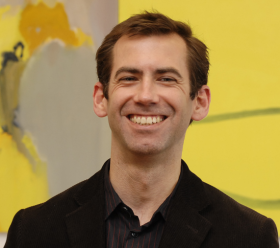You are here
Umbilical Cord Blood Stem Cell Scams: They're pulling your cord
Great hopes and anticipation have surrounded umbilical cord blood-derived cells since their first clinical use in the 1980s. They represent a relatively rich source of hematopoietic stem cells (HSCs), which are capable of restoring the blood system following disease, chemotherapy, or radioablation. Today HSCs from cord blood are widely used in the treatment of diseases of the blood system. Various other cell types derived from perinatal tissues, such as placenta, amniotic fluid, and Wharton's jelly, are also being examined for potential clinical uses. But the great excitement surrounding these sources of stem cells has also led to the rapid and uncontrolled development of an industry that markets unsupported and outright dubious "stem cell treatments" direct to patients and their families, charging thousands to tens of thousands of dollars for these unproven interventions.
At present, dozens of clinics around the world are making scientifically unfounded, and in many cases implausible, claims about umbilical cord blood derived stem cells. They often target the parents of children with intractable diseases, such as autism, diabetes, optic nerve hypoplasia/septo-optic dysplasia, and cerebral palsy. While some of these conditions have been or continue to be the focus of well-designed, randomized clinical trials of stem cell interventions, to date there is no rigorous evidence of the efficacy of stem cells in the treatment of these conditions. That notwithstanding, the Internet abounds with unsupported claims to the contrary.
As early as 2002, the now-defunct company Biomark was promoting what it claimed to be a cord blood-based therapy for neurodegenerative disorders, including Parkinson's disease and ALS (amyotrophic lateral sclerosis). This briefly earned the principals, a businessman and his runway model girlfriend, a spot on the FBI's Most Wanted List, after which they set up shop in several European countries and, subsequently, South Africa and The Seychelles, all while resisting extradition for fraud.
Also about a decade ago, a group of osteopaths and medical doctors centered around David Steenblock began promoting so-called "umbilical cord stem cell therapy" for a broad spectrum of neurological, endocrine, immune, ophthalmologic, and cardiovascular conditions. Steenblock was disciplined by the Osteopathic Medical Board of California for "gross negligence, repeated negligent acts, excessive treatments, failure to maintain adequate records, and falsely representing his credentials" in 2009.
Frank Morales, a former associate of Steenblock, gained national notoriety in 2010 with a separate scheme in which California-based Larry Stowe attempted to persuade an ALS patient to undergo a series of stem cell injections in Mexico for over $100,000. Thanks to the hidden camera that captured this transaction for the TV program 60 Minutes, both Morales and Stowe were arrested and are now facing charges of fraud.
In a separate 2012 investigation, 60 Minutes also uncovered how Dan Ecklund, an American who lost his license to practice medicine in the US, was shipping vials of dead cellular fragments direct to patients for use in treatments for which even living stem cells have not been demonstrated to be efficacious.
Perhaps the most famous and financially successful purveyor of dubious cord blood stem cell treatments was Beike Biotechnology, located in Shenzhen, China. This company was notorious for its aggressive use of online and social media marketing strategies. They provided free blogging services to their patients, which were selectively featured on a separate website to present an image of China as a premier destination for patients seeking cord blood-derived and other stem cells. By its peak in 2010, Beike claimed to treat nearly 100 diverse medical conditions using donated cells and to have treated nearly 10,000 patients. A stricter regulatory climate enforced in China in recent years has led the company to remove many of the more egregious therapeutic claims from its website.
Parents who seek to preserve the umbilical cord stem cells of their newborn in a private cord blood bank should be wary of companies that make unfounded claims for their healing powers, and should investigate the alternatives available in their area, such as public or hybrid cord blood banking programs. In many parts of the world cord blood banking is a "buyer beware" market. Parents need to check with independent and authoritative sources to find out what diseases can really be treated with which cells, and what is the current state of clinical trials on new therapies that utilize perinatal stem cells.
The clinics described here are just a small subset of the shadowy grey market for so-called "stem cell therapies" that has emerged over the past decade or so. To learn more about stem cell pseudo-medicine, visit my blog: Stem Cell Treatment Monitor, at sctmonitor.blogspot.com.



